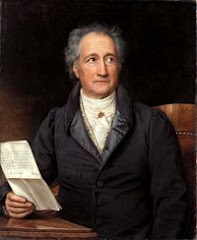I am writing this blog in response to our recent reading "Adel und Bürgertum" in which I read that Knighthood eventually became something of a joke in the new urban society and that realism became the trend in all forms of art. While reading this I asked myself if these two could somehow be connected- does embracing realism somehow go hand in hand with a rejection of Knighthood? This question brought to mind an episode from my carefree High School days when I was working at The Bell (Taco Bell that is). One evening I was talking to my manager and she happened to mention something about her father being involved in Freemasonry and I told her that I did not really know what this was (as I said these were carefree, pre-Da Vinci Code days). Soon I found myself (due to her insistence and my desire not to return to stuffing tacos) on the phone with her father. I soon found out all I needed to know-or rather was authorized to know- about Freemasonry from this real live Knight Templar (did I mention he was also a Worshipful Grand Master?). What he told me was that the Masons traced their heritage back to the Knights Templar-a title bestowed only upon the most "elite" of Masons- and that they seek today to promote "a system of morality veiled in allegory and illustrated by symbols." This morality is primarily Judeo-Christian in nature including piety, honor and charity, this allegory is almost entirely related to the military-monastic order of the Knights Templar and these symbols range from the Square and Compass to secret codes. Essentially the Masons (according to my tutor Knight Templar Larry) view themselves as the keepers of Knightly values-charity, piety, and honor- and employ various means- Codes, Symbols, Handshakes, even Guards at the door of their meetings- to protect these values. But what does this have to do with realism? In my opinion, the new city dwellers of the early 1500's would likely have viewed the Knights as many today view the Freemasons- as men quixotically trying to play the guarantors of western values in a world of realism that has passed them by. In response to or in keeping with this the artists of the time reflected this mood in their work making realistic landscapes and using everyday people as models for their work. The artists of the early 1500's responded to the mood of that time, a mood that holds that what these Knights did not realize is that there were no more Crusades to fight, no more Isoldes to rescue, and every Feirefiz defeated in battle would turn out to be nothing more than a La Manchan windmill.
Matthew Godwin
Thursday, January 31, 2008
Subscribe to:
Post Comments (Atom)







.jpeg)


No comments:
Post a Comment